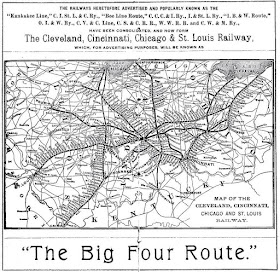 |
| 20151212 7473 |
I believe the vertical tie plates terminate tie rods that run completely through the brick walls inside the building. This helps hold in the outer walls and provide reinforcement for the interior walls.
 |
| Tsongas Industrial History Center posted
For those following our #MillYardMonday posts, sorry we missed one yesterday! Today is Tuesday, but it's the perfect time to learn about tie rods. You may have noticed the black metal knobs that dot the sides of mill buildings at evenly spaced intervals. These knobs are actually the protruding ends of objects called tie rods. The rods were used to secure floor support beams to the mill walls. Builders attached the rods to the beams and then pushed them through the wall, securing them to the outside in a way similar to using nuts and bolts. By attaching the tie rods this way, builders essentially anchored the floor beams to the walls. Eventually this building method was used less often as some believed that, in mill fires, tie rods actually caused more damage to the building. If the wooden floor beams sagged, snapped, or burned, it was likely they would pull down the walls with them since they were attached by the rods. The decision to stop using tie rods in construction made it more likely that the walls of a mill would remain standing after a fire, even if all the floor beams burned away.
In this image of the Boott Mill you can look to the left and see the ends of tie rods scattered across the building. This continues along the whole length of the structure as well as on the opposite side of the mill!
|
I first saw tie plates in a building in a small town in Illinois. (After a lot of searching in my picture folders, I discovered it was in Indiana.) Of course, I can't remember which town that was. I had gotten out to take pictures of railroad structures along a north/south railroad when I spotted it across the street. These are some of the buildings I came across while looking for the building I wanted to find.
In this building the tie rods with their plates seem to have been used for repairs. Note the cluster on the corner between the second and third floor. There is also a vertical set of tie plates in the lower-right corner.
(20141017 0061, Streetview)
The IC Depot in Mattoon, IL.
(20150730 3695)
One of the back shop buildings in IC's Paducah's shops has plates along the left side and along the bottom of the end wall. In this case, there is probably something heavy on the inside that has been mounted to the wall, and the mount needed the extra strength of a tie rod and plate.
(20150930 4965)
In North Baltimore, OH, I was taking a picture of the 1892 cut stone building, but I notice the building to the right has a couple of tie rod plates by the window.

But looking at a Streetview, they must be for a repair job rather than for the original construction.
(20151101 5239)
A block to the west is an old industrial building. (Unfortunately, it is currently vacant and for sale. I hope a developer can reuse it as an antique shop, wedding reception hall, or whatever building depending on the layout of the interior. People near Chicago have weddings in Streator, IL, even if some of the guests have to stay in Peru or Ottawa, IL because an industrial building was converted to a (relatively) reasonably priced "event center.") This view is looking to the northwest across the CSX/B&O mainline through town.
In this view of the east side, I see some tie plates that were used for repair ---- three horizontal ones on the right and at least two vertical ones on the left. (There may be more vertical ones behind the tree.)
(20151101 5230 and 5241)
(20151225 7772) (I spent Christmas Day driving around Tamp Bay because traffic would be light and because I had been to Busch Gardens the previous year.)
These two buildings in Newburgh, IN, have two types of plates. The one on the left has a couple of the typical star plates. The one on the right has six, green "daisy flower" plates.
(20140811 0493) Streetview

(20141108 0183) Streetview
The middle of the hydro-electric plant in Marseilles, IL, has two rows of tie plates along the top. But in this case I think it is to mount something heavy on the inside of the building.
(20140627 0056) Streetview
 |
| Attribution: Tie rods and anchor plates in the ruins of Coventry Cathedral |
I have a lot more pictures of brick buildings. But they were just a brick facade over a steel frame (effectively short skyscrapers). The brick in these older buildings with tie rods are probably load bearing walls built in the 1800s and early 1900s, and the rods are the only steel (wrought iron if old enough) in the structure. I assume that if tie rods were not used, more courses of brick would be needed in the walls to withstand lateral loads such as wind load. I wonder how well masonry buildings with tie rods survive earthquakes. (Masonry buildngs without tie rods don't survive.)
An 18-page .pdf sounded interesting, but when I clicked the "Download button," it asked for private information. A 201-page .pdf is more information than I'm willing to look at. I skimmed an 8-page .pdf and noticed that vertical ties are more effective at resisting earthquakes than horizontal ties.
 |
| 1976 Photo by Robert Daly via DeBruler |











































